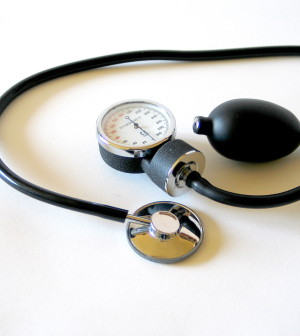- Navigating Your Midlife Crisis: Embracing New Possibilities
- City Raccoons Showing Signs of Domestication
- Mapping the Exposome: Science Broadens Focus to Environmental Disease Triggers
- One Week Less on Social Media Linked to Better Mental Health
- Your Brain Changes in Stages as You Age, Study Finds
- Some Suicide Victims Show No Typical Warning Signs, Study Finds
- ByHeart Formula Faces Lawsuits After Babies Sickened With Botulism
- Switch to Vegan Diet Could Cut Your Greenhouse Gas Emissions in Half
- Regular Bedtime Does Wonders for Blood Pressure
- Dining Alone Could Mean Worse Nutrition for Seniors
Check Your Risk for Diabetes, CDC Urges

No one is excused from diabetes. That’s the message behind a new public education campaign targeting the 86 million American adults with what’s known as prediabetes.
More than one in three adults in the United States has prediabetes, a serious health condition that can lead to type 2 diabetes, heart attack and stroke, according to the U.S. Centers for Disease Control and Prevention.
If you have prediabetes, you have higher than normal blood sugar levels, but not high enough to be diagnosed with full-blown diabetes.
“Awareness is crucial in the effort to stop type 2 diabetes,” David Marrero, director of the Diabetes Translation Research Center at Indiana University School of Medicine, said in a CDC news release.
To learn your risk, you can take a short online test at DoIHavePrediabetes.org. The test can also be taken through texts and interactive TV and radio announcements.
“This is a very simple and quick tool that will allow people to see if they are at risk for prediabetes or diabetes,” said Dr. Mary Vouyiouklis Kellis, an endocrinologist at Cleveland Clinic. “If they are at higher risk, this will hopefully prompt them to seek medical attention sooner.”
The majority of people with prediabetes don’t know they have it. Yet, if not treated, up to 30 percent of people with prediabetes will develop type 2 diabetes within five years, according to the news release.
“One of the problems with prediabetes and diabetes is that people sometimes don’t feel sick until it’s too late,” Vouyiouklis Kellis said.
Some simple changes in activity and diet can prevent diabetes, however.
“Losing 5 to 7 percent of body weight can significantly reduce your risk as well as making lifestyle changes, which include portion control, reducing foods with refined sugars and exercising regularly,” she added. “Exercising just 30 minutes a day, five days a week, can also help reduce this risk.”
Because it considers prediabetes one of the biggest public health crises in the United States, the CDC teamed up with the American Diabetes Association and the American Medical Association (AMA) to launch the new campaign.
Ads will be featured in English and Spanish. The campaign website offers lifestyle tips and links to the CDC’s National Diabetes Prevention Program, which lists CDC-recognized programs nationwide. Also, text messaging is available for people who want to receive ongoing support and lifestyle tips.
Knowing you have prediabetes is just the first step in preventing type 2 diabetes, AMA President-Elect Dr. Andrew Gurman said in the CDC news release.
“As soon as someone discovers they may be at risk of prediabetes, they should talk with their physician about further testing to confirm their diagnosis and discuss the necessary lifestyle changes needed to help prevent type 2 diabetes,” Gurman said.
Roughly 29 million people in the United States — more than 9 percent of the U.S. population — have diabetes, mostly type 2, according to the CDC.
More information
Here’s where you can find the prediabetes risk test.
Source: HealthDay
Copyright © 2025 HealthDay. All rights reserved.










